How to Identify and Attract a Tufted Titmouse
Updated: Jan. 26, 2024
Learn how to identify and attract a tufted titmouse. Offer seeds and suet, then watch their back-and-forth antics at the feeder.
What Does a Tufted Titmouse Look Like?
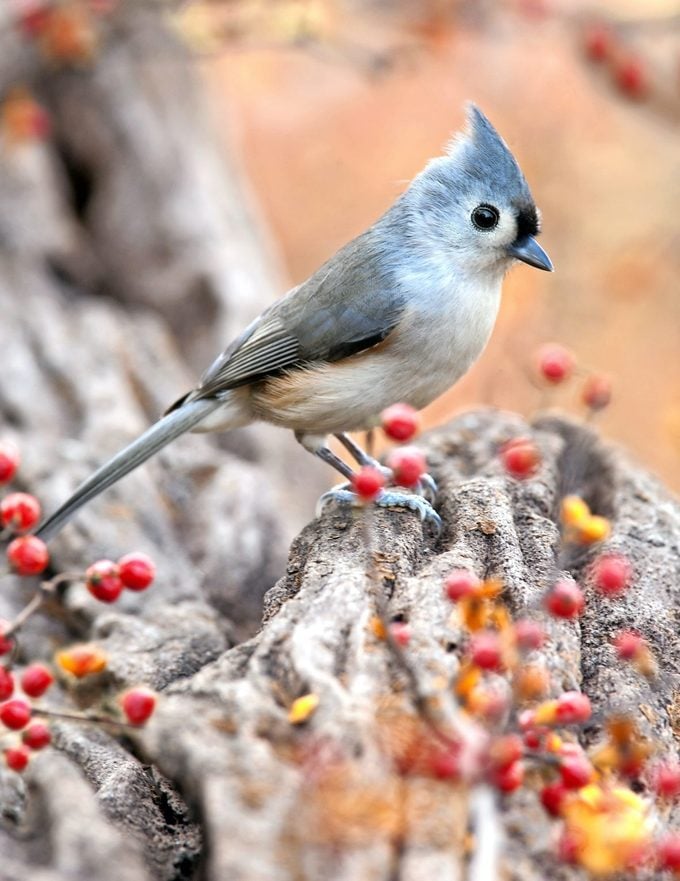
- Scientific Name: Baeolophus bicolor
- Common Name: Tufted titmouse
- Family: Chickadee
- Length: 6-1/2 inches
- Wingspan: 9-3/4 inches
- Distinctive Markings: A tufted titmouse is gray above and white below, rusty-brown flanks, prominent pointed crest and large dark eyes.
The next time you notice a mixed flock of various bird species congregating in your backyard, scan the hungry crowd for a stocky, gray-crested bird with a white belly, peach coloring on its flanks and a small black patch on its forehead. The tufted titmouse is a common sight among small winter groupings of chickadees, nuthatches and woodpeckers.
The tufted titmouse’s name may seem a bit odd, but there’s an interesting story behind its origin. The second part of the bird’s name is actually derived from the Old English word mase, meaning “small bird.”
Learn more about titmice species. (Or is it titmouses?)
Nest and Eggs
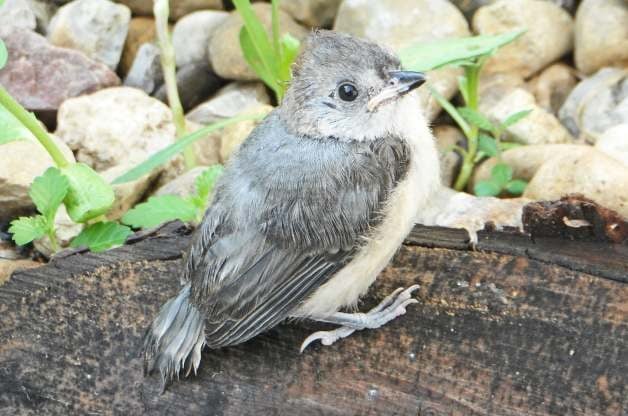
During warmer months, these small songbirds mainly stick together in lifelong mating pairs within established territories. In spring, the female nests in a natural tree cavity, abandoned woodpecker hole or nest box instead of excavating her own. “Maintaining or encouraging the growth of large trees in your yard is a great way to cultivate a tufted titmouse habitat,” says Emma Greig, the project leader for Project FeederWatch of the Cornell Lab of Ornithology. “They really enjoy a deciduous woodland habitat.”
Their nests are lined with soft nesting material, such as moss and grass. These bold birds even occasionally steal pieces of fur from live animals for their nests! The female lays three to nine creamy spotted eggs. For tufted titmice, raising a brood is a family affair, with both male and female birds feeding the baby birds. Once in a while, a juvenile tufted titmouse will actually remain with its parents for the following breeding season to help care for the next generation.
Psst—this species is one of the cutest birds in America.
What Does a Tufted Titmouse Eat?
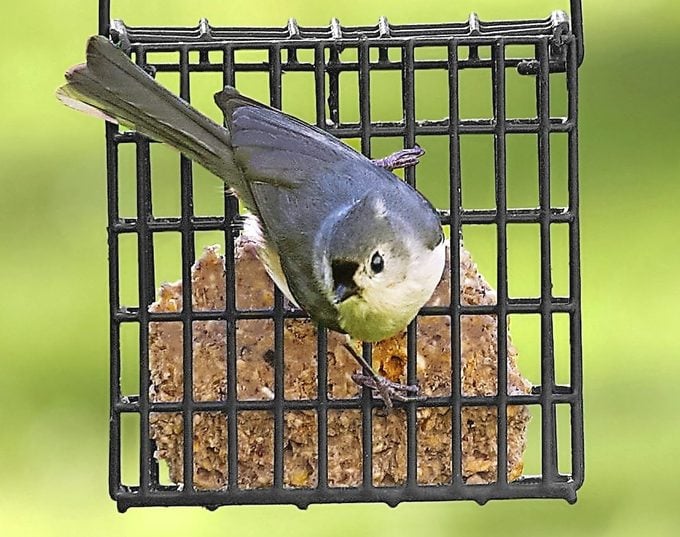
Although you can attract tufted titmice to your yard in any season, fall and winter are especially good opportunities to set up hanging feeders—that’s when the bird’s normal prey, insects, become harder to come by.
Tufted titmice love sunflower seeds, but they’ll snack on suet, peanut butter and peanuts, too. Instead of staying at the feeder to eat, this bird takes one seed at a time from the feeder, flies away with it and then hammers the shell open with its stout bill. If not yet ready to eat, it will store the shelled seed in a bark crevice or other safe hiding place. They don’t travel far though—most titmice stockpiles are no more than 130 feet away from a particular feeder.
Tufted titmice also go foraging for seeds and insects, particularly caterpillars, in the summer. The birds hop along tree branches as they search for food, often acrobatically hanging upside down from heavier branches.
Bird Song
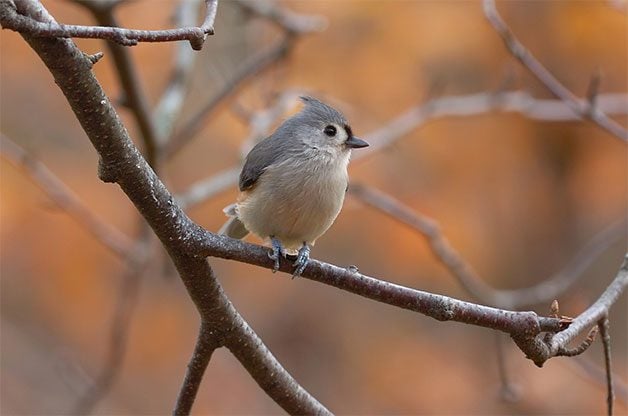
If you’re just beginning to learn different birdcalls, the tufted titmouse’s bright and clear peter-peter-peter whistle is a fantastic one to add to your repertoire. Male tufted titmice often use this song when they’re trying to attract a mate and will repeat it multiple times in quick succession. They also have a harsh chattering sound to warn other birds of intruders.
Listen to the tufted titmouse’s song.
Bird songs provided by the Cornell Lab of Ornithology.
Meet the most musical songbirds in America.
Range Map and Habitat
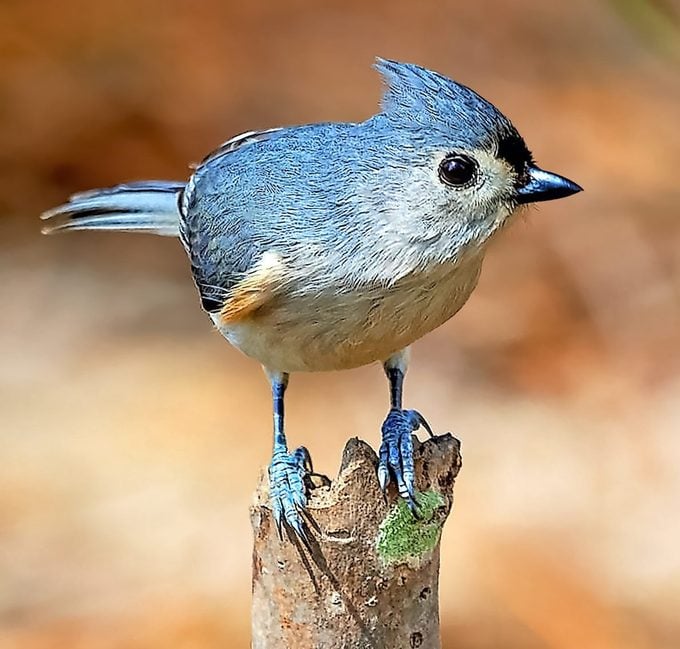
Look for these birds in deciduous woodlands, preferably in swamps and river bottoms. However, they have adapted to residential wooded areas. The tufted titmouse can be spotted year-round in backyards and parks in the eastern half of the U.S. Long regarded as a southern species, the tufted titmouse has been spreading northward and is now a familiar visitor across the east.
The tufted titmouse is a favorite among photographers. The birds seem to be extra friendly and almost always have cheerful expressions,” says Birds & Blooms reader John Baughman.
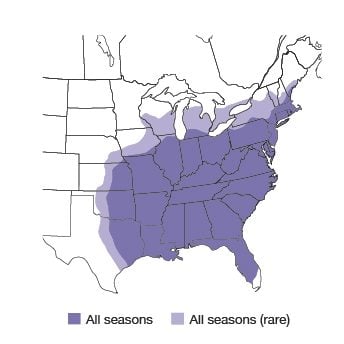
Range maps provided by Kaufman Field Guides, the official field guide of Birds & Blooms.
